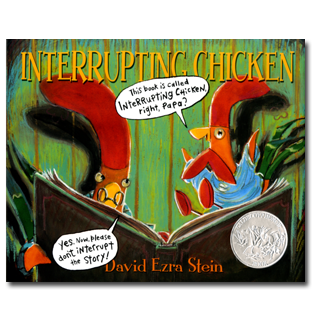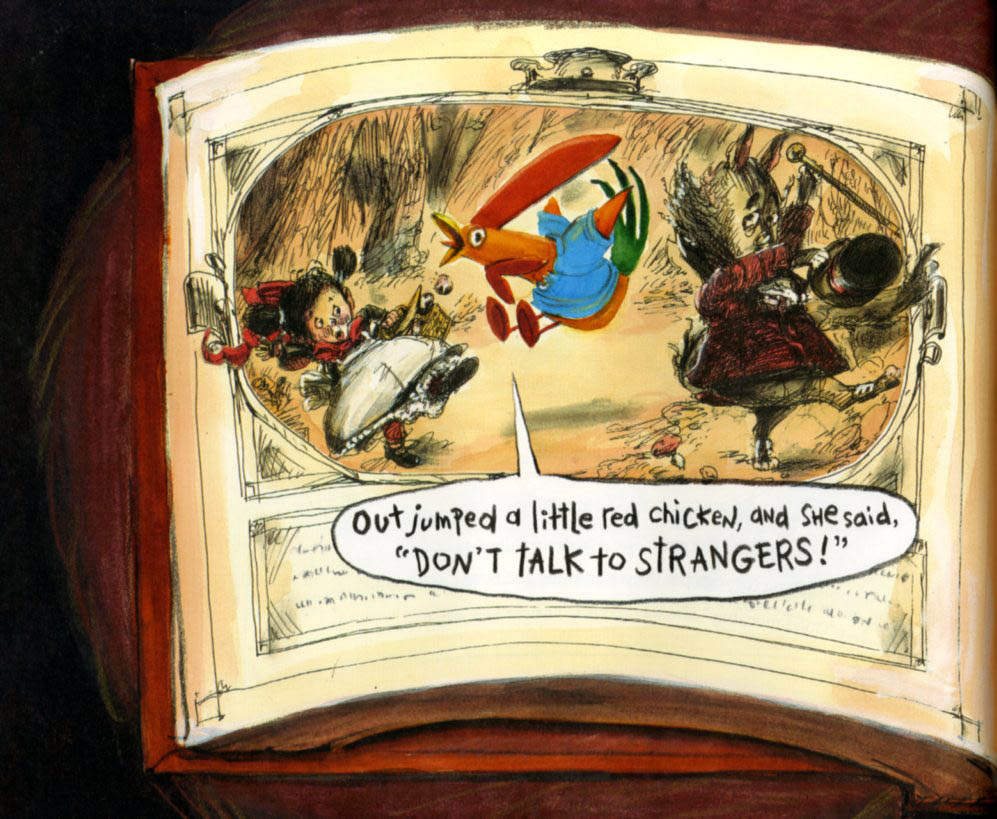
A FEW OTHER EVENTS FOR
MARCH 23:
- Happy birthday Lynne Barasch (First Come the Zebra, Hiromi’s Hands).
- It’s the birth date of Eleanor Cameron (1912–1996), A Room Made of Windows, The Wonderful Flight to the Mushroom Planet.
- It’s National Puppy Day! Read Pigeon Wants a Puppy by Mo Willems.
From March 22–28, we celebrate World Folk Tales and Fables Week, established to encourage children and adults to explore the lessons learned from folk tales and fables. Although folk and fairy tales form the basis of world literature and culture, adults have often questioned introducing them to children. After all, the material in these legends is often dark and violent. But if children don’t learn these basic building blocks of literature, they cannot read or appreciate much adult literature later on.
Folk and fairy tale retellings formed a large portion of books published for children in the 1970s and 1980s, but have since fallen out of favor. Fortunately in the last few years, individual volumes dedicated to the world’s most enduring stories have proliferated, giving those who work with children a wide range of choices. Though our book of the day won’t teach children any of these tales, it may well pique their curiosity and make them want to go back to the original stories.
The protagonist of David Ezra Stein’s Interrupting Chicken, a Caldecott Honor Book, is a little red chicken who adores having her rooster father read her a bedtime story. Although he admonishes her not to interrupt his readings of “Hansel and Gretel,” she just can’t help warning the characters in the story. She tells Hansel and Gretel to stay away from the witch—and immediately proclaims the story is over. She does the same with “Little Red Riding Hood” and “Chicken Little.” Finally this girl makes up her own story, which sends her father to sleep.
Humor, personal relationships, and the loving bond between a father and child all get explored in this funny picture book that can be used for the two- to eleven-year-old crowd. Illustrated with vibrant watercolors capturing the action and passion of the young chicken, Interrupting Chicken has already become the favorite story of many picture-book readers. But do not ignore my warning. Once Interrupting Chicken is read to your four, five, or six year old, you will be asked to read it again, and again—and again!
Here’s a page from Interrupting Chicken:

Originally posted March 23, 2011. Updated for .













I love this book! Have a practicum student teaching fairy tales and fables right now and she’s going to read this after she finishes the fairy tale portion. So much fun! I completely agree when you say, “But if children don’t learn these basic building blocks of literature, they cannot read or appreciate much adult literature later on.” Another favorite in the folk literature realm that I adore right now is A Tale Dark and Grimm by Adam Gidwitz.
I was such a fan of Leaves when it first came out, so when I saw this title at the bookstore, I was excited to see something new by David Ezra Stein. I was even more excited when I found I loved it just as much, but it was so different from Leaves and that he had really diversified his style with Interrupting Chicken — lots going on artistically, variety of mediums on each page, comic-book-feeling, and more. Different enough that I might not have ever guessed it was the same author/artist. Plus, it just cracks me up! I can’t wait to see what he does next.
The children at my school chose this as one of the best picture books published in 2010! They loved it and thought it was hilarious! So did I.
My strongest and fondest memories of stories from my childhood are of folk tales. As a school librarian, I cover folktales with every grade. The older children enjoy fractured fairy tales which they can enjoy because they know the originals. Read “Interrupting Chicken” to the fourth-grade last week and they loved it! One boy asked to check it out right away. Also like “The Fairy-Tale Detectives” series by Michael Buckley for upper elementary kids.
Thank you everyone for these comments. It is rare when a very new book engenders such enthusiasm. Glad to know about both Dan’s and Carol’s students. Carol’s comment reminds me that a really good picture book can work for many ages.
I also like to use Extra! Extra! Fairy-Tale News from the Hidden Forest to teach about fairytales and the elements of a newspaper.
What? National Puppy Day? Who knew! Must go find a few to bring home.
My fourth and sixth graders got a big kick out of Interrupting Chicken. They liked the change in picture tone from the reading chickens to the darker fairy tale text, at least until the red chicken gets in there. We read it because we’re going through the Cybils short lists, and it was a fun addition to our bedtime.
We also like The Stinky Cheese Man for takes on fairy tales, and recently were pleasantly surprised to find that SPLINTERS, a book about ice hockey, was a Cinderella story.
For originality and spunk, destined to become a classic.
I just got this for my elementary library and the son of a colleague was the first to check it out. I told her that she or another adult should read it aloud to her second grade and K sons, because the interrupting part wouldn’t be as clear to an emerging reader. She reported a few days later that she cajoled her husband into reading it aloud to the boys and all she could hear from the other room was giggles as the chicken interrupted. The second grader brought it back to school and talked about it so much that his teacher read it aloud to the class. It also elicits a chuckle from every adult who reads it.
I, too, teach a different form of traditional literature to all of my students K-5. They all clamor to take the books home with them, thanks to the great retellings we’ve gotten lately!
I love this book! I think it’s so appropriate for our age of constant interruption. Children have become accustomed to commercials on TV and pop ups on the internet. Stein cleverly combines a very current type of normalcy with the age old folk and fairy tale tradition to introduce children to these tales in a way that, oddly enough, they can most easily understand.
i like the book iam 7 yers old and i think it is a grat book for chilgen to reed and moms and dads.
This book is so rad. It is definitely one of the best designed covers ever. Covers of picture books (actually, any book) should act like an advertising poster, since it is the first part of the book/story readers see while they’re browsing through libraries and book stores. The cover needs to be able to convey what the book is about quickly. This book is about a chicken who interrupts her papa’s bedtime stories. Stein infuses this theme/concept on the cover by depicting Chicken in the act of interrupting the viewer who is trying to read the cover. Chicken is jumping up behind a book and “calling” out. Her speech bubble covers the title. Therefore, Stein begins the them of his story (interrupting story times) by making Chicken interrupt the viewer’s story time. Brilliant!
I agree with Lilia. The cover of this book is very much like an advertising poster. There’s also something very comic-like about the cover as well. The colors pop and, of course, there is a speech bubble present. I actually picked up this book a couple of weeks ago and read it my nephew, who absolutely loved it.